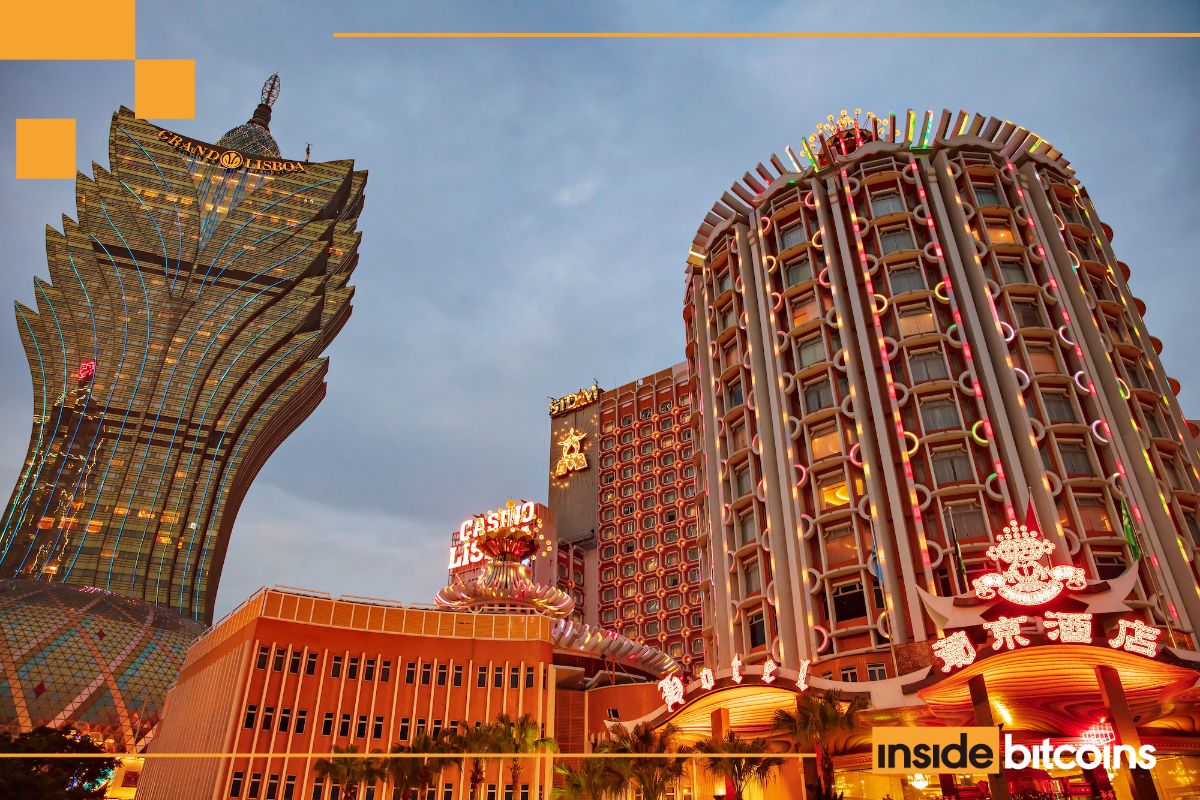SJM Holdings has finally turned the corner in early 2025, posting a modest but significant profit that signals potential stabilization for Macau’s oldest gaming operator. After weathering extended challenges in the post-pandemic era, the company has managed to leverage its renovated properties and shifting market dynamics to secure its first profitable quarter since COVID disrupted Macau’s casino industry.
The legacy casino operator recorded a HK$31 million ($4 million) profit for Q1 2025, marking a notable turnaround from the HK$74 million ($9.5 million) loss reported during the same period last year. While this profit represents a fragile recovery-equivalent to just 0.3% of rival Galaxy Entertainment’s $1.3 billion quarterly profit-it nonetheless demonstrates SJM’s gradual adaptation to Macau’s transformed gaming landscape.
Macau’s Gaming Market Evolution and SJM’s Position
The broader Macau gaming market has undergone significant structural changes, with mass-market segments now driving the industry’s performance. In the first quarter of 2025, Macau’s mass-market casino sector, including slot machine activity, generated MOP43.20 billion (US$5.40 billion), representing a modest 0.6% increase year-over-year. This segment now accounts for approximately 74.9% of Macau’s total gaming revenue, reflecting the market’s dramatic shift away from VIP-dependent business models.
Against this backdrop, SJM Holdings has managed to increase its market share to 13.5% in Q1 2025, up from 12.4% during the same period in 2024-a gain of 1.1 percentage points that demonstrates the company’s improving competitive position. This growth comes despite what SJM’s Chairman Daisy Ho described as “softer consumer spending” across the market. Ms. Ho noted:
While the market experienced softer consumer spending in the first quarter, SJM’s performance remained steady on a sequential basis. The property enhancements undertaken throughout 2024 are now coming to fruition, with a pipeline of new offerings set to launch in phases-serving as growth levers for the mass market.
Financial Performance: Behind the Numbers
SJM’s total net revenue reached HK$7.48 billion ($958 million) for the quarter, representing an 8.1% increase compared to Q1 2024. This growth outpaced Macau’s overall market expansion, suggesting SJM is regaining some ground against competitors. Net gaming revenue, which constitutes the bulk of SJM’s business, rose 7.5% year-on-year to HK$6.95 billion ($890 million).
The company’s gross gaming revenue (GGR) showed even stronger performance, climbing 9.6% to HK$7.55 billion, after deducting commissions and incentives totaling HK$602 million ($77 million). This GGR growth rate outperformed the broader Macau market, helping explain SJM’s market share gains during the quarter.
Adjusted EBITDA increased by 10.9% year-on-year to HK$958 million ($123 million), with the Adjusted EBITDA margin improving slightly by 0.3 percentage points to 12.8%. While this represents progress, SJM’s EBITDA margins remain substantially below the industry average of approximately 28%, highlighting ongoing efficiency challenges. The company’s cost-to-revenue ratio stands at a concerning 91.8%, inflated by Grand Lisboa Palace’s $1.9 billion expansion and rising labor expenses across its portfolio of properties.
Property Performance: A Tale of Contrasting Fortunes
SJM’s property portfolio continues to show divergent performance trajectories, with the flagship Grand Lisboa Palace (GLP) in Cotai gradually gaining momentum while the legacy Grand Lisboa on the peninsula faces headwinds.
Grand Lisboa Palace: Growth Amidst Challenges
The Grand Lisboa Palace Resort Macau, SJM’s ambitious entry into Cotai that opened during the pandemic in 2021, generated total revenue of HK$1.93 billion ($247 million) in Q1 2025, representing a substantial 36.2% increase compared to the same period last year. GGR at the property rose even more dramatically, climbing 41.1% to HK$1.57 billion ($201 million).
More significantly, GLP’s market share within Macau rose 0.8 percentage points to 2.8%, compared to 2.0% in Q1 2024-suggesting the property is finally beginning to establish itself within the competitive Cotai Strip landscape. The property contributed approximately 47.7% of SJM’s total revenue, making it the company’s largest single revenue generator.
However, despite this growth, Grand Lisboa Palace continues to face substantial challenges. The property’s EBITDA remained negative at approximately -$18 million for the quarter, reflecting ongoing operational inefficiencies. Its isolated location away from Cotai’s main cluster requires shuttle services that 68% of surveyed guests consider “inconvenient,” while its branding lacks the thematic distinctiveness of competitors like The Londoner or Studio City. Additionally, the property continues to struggle with the legacy of its original design, which allocated significant space to VIP operations that have since collapsed following Beijing’s 2022 crackdown on junkets.
Grand Lisboa: The Declining Stalwart
Meanwhile, the Grand Lisboa Hotel on the Macau Peninsula-SJM’s traditional flagship property-reported a 3.6% decline in total revenue to HK$1.89 billion ($242 million), with GGR falling 4.4% to HK$1.79 billion ($229 million). This decline comes despite recent renovations and underscores the ongoing challenges faced by peninsula properties as Cotai continues to dominate Macau’s gaming landscape.
Nevertheless, the aging Grand Lisboa remains critical to SJM’s profitability, contributing an estimated 92% of the group’s EBITDA despite having operated since 1970. The property’s occupancy rate of just 22% trails dramatically behind competitors like Wynn Palace’s 89%, highlighting significant room for improvement in non-gaming amenities and overall property appeal.
Satellite Casinos and Other Properties
SJM’s other self-promoted casinos, including Jai Alai Hotel, Kam Pek Market, and Sofitel at Ponte 16, reported combined total revenue of HK$1.42 billion ($182 million), representing a 6.8% year-on-year increase. GGR in this segment grew 6.6% to HK$1.34 billion ($172 million).
In the satellite casino segment, which includes nine properties operating under SJM’s license, GGR improved 7.6% year-on-year, rising from HK$2.64 billion ($338 million) to HK$2.85 billion ($365 million). However, uncertainty looms over these operations, as the transitional period for satellite casinos is scheduled to end on December 31, 2025, with no official decision yet announced regarding their future regulatory status.
Non-Gaming Revenue: A Bright Spot
While gaming remains SJM’s primary revenue driver, the company’s non-gaming segments showed encouraging growth during Q1 2025. Revenue from hotel, catering, retail, and leasing operations increased by 16.4% year-on-year to HK$531 million ($68 million). This growth outpaced gaming revenue expansion and aligns with Macau’s government-endorsed shift toward a more diversified tourism economy.
The company reported an average hotel occupancy rate of 97.3% across its properties, representing a 4.8 percentage point increase from the 92.5% recorded in Q1 2024. This high occupancy rate, which exceeds pre-pandemic levels (89.5% in Q1 2019), demonstrates strong visitor demand for SJM’s accommodations despite challenges in converting this traffic into gaming revenue at some properties.
Financial Stability and Banking Facilities
SJM’s syndicated banking facilities comprise a HK$9 billion ($1.16 billion) term loan and a HK$10 billion ($1.29 billion) revolving credit facility. As of March 31, 2025, approximately HK$3.8 billion ($490 million) of the revolving credit facility remained undrawn, providing the company with liquidity headroom to manage operations and pursue strategic initiatives.
However, the company’s high cost structure and relatively thin profit margins could eventually strain these financial resources if operational efficiencies aren’t improved. With a cost-to-revenue ratio exceeding 90%, SJM faces significant challenges in converting its revenue growth into sustainable profitability.
Mass Market Transition and Future Outlook
SJM’s performance reflects the broader transformation of Macau’s gaming industry, which has pivoted decisively toward mass-market segments following the collapse of VIP junket operations. Across Macau in Q1 2025, mass-market baccarat alone generated MOP34.32 billion (US$4.29 billion), accounting for 59.5% of the city’s total GGR. Slot machine revenue contributed an additional MOP3.27 billion (US$405 million), representing approximately 5.7% of the market. Revenue from operators of crypto slots has also registered significant increases.
Meanwhile, VIP baccarat revenue, which once dominated Macau’s gaming landscape, increased by just 0.5% year-on-year to MOP14.46 billion (US$1.80 billion), accounting for 25.1% of total quarterly GGR. This figure represents only 38.9% of the level seen in Q1 2019, underscoring the segment’s dramatic contraction in the post-pandemic regulatory environment.
SJM appears better positioned for this new reality than it was previously, with its Non-Rolling GGR for self-promoted casinos reaching an impressive 148% of the equivalent figure from Q1 2019. This demonstrates the company’s progress in pivoting toward mass-market segments, though challenges clearly remain.
Looking forward, Ms. Ho acknowledged ongoing macroeconomic headwinds but expressed confidence in “the long-term fundamentals of Macau’s tourism economy.” The company’s focus on property enhancements and new offerings targeted at mass-market segments suggests a coherent strategic direction aligned with Macau’s evolving regulatory and market landscape.
However, fiscal concerns loom over the broader Macau market. Chief Executive Sam Hou Fai recently voiced worry about potential budget deficits if monthly gaming revenues fall below MOP15 billion (US$1.88 billion), highlighting the economic pressures facing the region. For SJM specifically, the challenge remains converting its modestly growing revenue into sustainable profitability that can support long-term investment and shareholder returns.
As SJM navigates this complex landscape, its ability to enhance operational efficiencies, particularly at Grand Lisboa Palace, will likely determine whether its return to profitability represents the beginning of a sustainable recovery or merely a temporary reprieve in an ongoing struggle for relevance in Macau’s transformed gaming market.
Related News
- Macau’s Record Gaming Revenues, Changing Visitor Demographics, and Expanding Potential Beyond Vegas
- Contrasting Fortunes: Macau’s Gaming Growth vs. Las Vegas’s Decline
- Macau’s Gaming Sector Faces Early 2025 Hurdles Amid Hopes for Growth
- Gaming Industry Boosts Spending on Responsible Gaming Efforts Amid Growing Commitment


